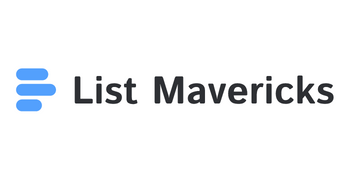An outbound marketing strategy for B2B helps businesses reach potential clients by actively getting their message in front of the right people. Instead of waiting for prospects to come to them, companies use tools like cold emails, direct mail, and calls to start conversations and build relationships. This direct approach is still a key way to bring in new leads and stand out from competitors in today’s crowded market.
Many B2B companies see success when they combine careful planning with smart research. For example, focusing on the right audience and personalizing outreach can lead to much higher response rates compared to mass emailing. Using online platforms and data tools also helps teams track results and adjust their efforts, leading to better performance over time. Efforts like these set the foundation for steady growth and measurable success, as shown by several recent marketing studies and guides on effective B2B strategies, such as those found in Teamly’s B2B outbound marketing insights.
Key Takeaways
- Outbound marketing strategy is about directly reaching B2B prospects.
- Smart targeting and digital tools improve effectiveness and results.
- Tracking performance helps businesses optimize and grow.
Fundamentals of Outbound Marketing for B2B

B2B outbound marketing uses direct outreach to potential business customers. These methods aim to generate leads, build brand awareness, and drive sales through focused marketing strategies.
Understanding Outbound Marketing
Outbound marketing is when a business actively reaches out to other businesses to promote products or services. This approach involves activities like cold calling, direct mail, and targeted email campaigns. The company decides who to contact and when, rather than waiting for potential clients to come to them.
For B2B companies, outbound marketing can include trade shows, telemarketing, and even paid social media or digital ads designed for business buyers. The process is controlled, targeted, and often repetitive to increase the chance of connecting with decision-makers. Companies measure results by tracking lead generation and conversion rates, often using tools such as CRM systems or analytics platforms. More information can be found about different outbound approaches on this B2B outbound marketing guide.
Differences Between Outbound and Inbound Marketing
Outbound marketing and inbound marketing take opposite paths to reach customers. Outbound methods push messages to prospects using paid ads, calls, or emails, while inbound marketing attracts prospects with helpful content like blogs, webinars, and guides.
Inbound marketing focuses on building relationships and trust over time, using educational resources that encourage interested businesses to make the first move. Outbound marketing, in contrast, targets a specific list or audience right away and aims for immediate engagement or response. In B2B settings, combining both can offer a balanced marketing strategy, using outbound for quick results and inbound for long-term growth. The distinctions between outbound and inbound are covered in more depth in this complete B2B outbound marketing guide.
Core Outbound Marketing Strategies
There are several core outbound marketing strategies used in B2B environments:
- Cold Emailing: Sending targeted messages to business contacts.
- Telemarketing: Calling businesses to introduce offerings or set meetings.
- Direct Mail: Sending physical letters or packages to decision-makers.
- Paid Ads: Running ads on platforms like LinkedIn targeting business roles.
- Account-Based Marketing (ABM): Focusing on high-value accounts with tailored campaigns.
Companies often use a mix of these channels to reach prospects and generate leads. Tracking and measuring each effort is essential for refining the marketing strategy. Tools like Salesforce and HubSpot help manage outreach and analyze performance metrics. To explore more about specific strategies, read the outbound marketing strategies for B2B growth.
Benefits and Challenges
Outbound marketing offers some clear benefits. Companies may see immediate results, such as quick lead generation, which can help meet short-term sales goals or respond to changes in the market. Outbound outreach also gives sales teams more control over who they target.
There are challenges, too. Outbound methods can be seen as intrusive, especially if the message feels impersonal or repetitive. Campaigns also require ongoing time and budget, and response rates have dropped for channels like cold calling. Staying relevant and personalizing outreach can help overcome these issues. Businesses face a shifting landscape, as the future of outbound marketing will likely depend on smarter targeting, better data, and improved technology. Finding the right balance is key to maintaining a competitive edge.
Identifying and Engaging the Target Audience

Successful outbound marketing in B2B relies on knowing which companies and decision-makers to target. Doing so requires a deep understanding of ideal customer profiles, buyer personas, segments, and how to address distinct business needs with personalized outreach.
Building Ideal Customer Profiles
An ideal customer profile (ICP) describes the type of company most likely to benefit from and buy a product or service. This profile usually covers industry, company size, location, revenue, and technology use.
Teams start by gathering data on past and current clients to find patterns. Reviewing which deals closed quickly and led to long-term success helps shape this profile. Using data and analytics makes the process more precise, letting teams prioritize high-potential organizations with similar traits to past successes.
According to some guides, it is important to be specific with your ICP, not general. For example, targeting “SaaS startups in the healthcare industry with over 100 employees” instead of just “startups” makes outreach more effective. This focus saves time and resources by cutting out unlikely leads. For practical steps, see how teams can define a B2B ideal customer profile.
Buyer Personas in B2B
Buyer personas are fictional, research-based profiles representing decision-makers, stakeholders, or influencers within target companies. Each persona highlights unique pain points, motivations, and roles in the buying process.
Building accurate personas starts with interviewing current buyers, reviewing customer feedback, and examining sales experiences. Teams list out common job titles, challenges, goals, and even how each persona prefers to communicate. For example, an IT Manager may value data security, while a CFO focuses on cost savings.
Mapping out detailed personas helps marketers craft messages that speak directly to what each audience cares about. It also supports sales reps in addressing objections and showing relevant value. Having several personas allows for focused, relevant communication with the right people.
Segmentation and Personalization
Segmentation breaks target audiences into smaller groups based on specific factors such as industry, region, company size, or purchase history. This allows for more tailored outreach that gets better results.
Personalization takes things further. Messages, offers, and campaigns are adjusted for each segment—or even each individual—using data from behavior, engagement, and preferences. For example, email outreach to a marketing director in a tech company can be personalized by referencing relevant pain points or recent company news.
Digital platforms make it easier to automate and scale personalization. Combining segmentation with targeted storytelling leads to more meaningful engagement and improved response rates. For advice on leveraging these tools, see how segmentation can refine outbound marketing efforts.
Addressing Customer Needs
Outreach must center on the needs and goals of the audience. This means understanding customer pain points, decision drivers, and how the solution fits into their business.
Effective teams directly link their value proposition to customer challenges. They show clearly how their product or service solves a real problem or helps achieve a business goal. Messages should be simple, specific, and focus on benefits for the decision-maker.
It helps to provide relevant case studies, demos, or ROI projections. Decision-makers want proof and practical insights. Meeting their needs directly builds trust and increases the chance of a response. Consider that buyers often do their own research first, so providing clear, valuable information early is a key part of engaging B2B buyers.
Core Outbound Marketing Techniques

Successful B2B outbound marketing relies on proven techniques that focus on starting conversations, targeting decision-makers, and gaining responses. Each tactic has a unique approach but shares the goal of driving leads and creating new business opportunities.
Cold Emails and Personalized Cold Email Campaigns
Cold emails are direct messages sent to potential clients who have not interacted with the company before. When these emails are personalized, they stand out and can increase response rates. Effective cold email campaigns pay attention to details such as using the recipient’s name, referencing a recent company achievement, or noting mutual interests.
A strong subject line is essential—it grabs attention and encourages the recipient to open the message. Personalization includes adjusting the message to match the recipient’s industry, challenges, or business goals. Companies can use information from LinkedIn profiles and company news to make emails more relevant.
Building a focused email list helps avoid spam folders. Following up consistently but respectfully increases the chances of getting a reply. Successful teams use cold email tracking and test different approaches to improve results.
Cold Calling and Telemarketing
Cold calling is the practice of reaching out by phone to potential clients who have had no previous contact with the business. Telemarketing allows for personalized conversations and immediate feedback. The key is not to deliver a scripted sales pitch but to have a real conversation that explores a need or pain point.
Representatives should research who they are calling to better understand the person’s business and industry. Asking open-ended questions makes it easier to start a dialogue. Many B2B companies use a two-step process, beginning with an introduction and then scheduling a follow-up call or meeting.
Reaching the right person is important. Gatekeepers such as receptionists may need to be managed with patience and professionalism. Consistent outreach, well-timed calls, and clear talking points help increase appointment rates, making cold calling and telemarketing a foundational outbound marketing technique.
Direct Mail and Direct Mail Campaigns
Direct mail includes sending physical items, such as letters, brochures, or branded merchandise, to business contacts. It can cut through digital clutter and reach decision-makers who ignore emails or calls.
Personalized direct mail pieces, like handwritten notes or customized gifts, show effort and can leave a lasting impression. By targeting key accounts, companies use direct mail to start conversations and support other outreach activities. Campaigns often include a clear call to action, such as scheduling a meeting or visiting a custom landing page.
Timing is important. Sending direct mail before trade shows or after an introductory call can boost response rates. Integration with digital efforts allows businesses to track results and adjust strategies.
Events, Trade Shows, and Promotions
B2B companies attend events and trade shows to meet prospects face-to-face and build new relationships. These gatherings provide a chance to present products, answer questions, and collect business cards.
A well-designed booth, clear messaging, and trained staff help attract visitors. Hosting special promotions, offering product demos, or running prize draws can increase foot traffic. Companies often contact leads both before and after the event to maximize engagement.
Networking at these events creates opportunities for follow-up cold emails or calls. Using event data, such as attendee lists, enables targeted, data-driven outbound marketing strategies that can drive more qualified leads.
Leveraging Digital Channels in Outbound Marketing

Digital channels let B2B marketers reach target buyers with tailored, measurable campaigns. They use email, advertising, and social platforms to drive interest, build trust, and generate leads.
Email Marketing and Email Campaigns
Email marketing is one of the most effective digital tools in outbound B2B campaigns. Companies use cold email strategies to directly reach decision-makers with their offers, updates, and invitations.
Marketers segment email lists by role, industry, or company size. Personalization helps boost open and reply rates. Well-timed follow-ups and A/B testing make email performance better. It’s key to write clear subject lines and simple messages for busy professionals.
Automated email sequences ensure consistent outreach while saving time. Integrating a CRM system helps track replies, monitor engagement, and plan future campaigns. For many B2B firms, refined email campaigns achieve higher response rates than bulk emails.
Advertising and Digital Advertising
Digital advertising offers precise targeting and detailed analytics for outbound marketing. B2B marketers invest in banner ads, display networks, and retargeting to stay visible to business audiences online.
Advertisers use platforms like Google Ads and LinkedIn to place banners on business sites. They can limit ads to defined industries, job titles, or locations. Retargeting reinforces brand messages by showing ads to visitors who have already engaged with a website or landing page.
Performance is tracked using click-through rates, conversion rates, and cost-per-lead measures. Integrating digital channels with other outbound tactics provides a cohesive brand message and makes ad spend more efficient.
Social Media Advertising and Ads
Social media ads help B2B companies reach specific audiences who are active on platforms like LinkedIn, Facebook, or X (formerly Twitter). These platforms offer targeting by job function, industry, company size, and interest.
Sponsored posts, carousel ads, and lead gen forms attract business buyers and encourage engagement. Marketers often use LinkedIn for B2B outreach due to its focus on professionals. Short, direct messages and industry-relevant visuals increase ad performance.
Campaigns are tracked closely through analytics dashboards. This allows companies to adjust budgets, copy, or audiences for better results. Social media advertising is most effective when combined with other outbound strategies.
Paid Search and Video Ads
Paid search ads show company offers to users searching for business solutions on platforms like Google and Bing. Marketers bid on industry keywords relevant to their products or services.
Text ads are placed at the top of search results, catching buyers who are ready to learn or compare. Combining paid search with landing pages designed for conversion raises the number of leads.
Video ads run on sites like YouTube and LinkedIn. They share product demos, testimonials, or thought leadership with business buyers in a visual format. Campaign results are tracked by impressions, clicks, and video watch time to measure return on investment.
Optimizing and Automating Outbound Marketing Efforts

Focusing on targeted approaches and technology-driven processes helps B2B teams stay productive and relevant. Streamlining outbound marketing leads to better lead nurturing, stronger engagement, and higher returns with less manual work.
Implementing Account-Based Marketing (ABM)
Account-based marketing (ABM) allows companies to focus their efforts on key accounts that have the highest potential value. This approach uses both marketing and sales teams to deliver personalized messages to decision makers within select companies. Instead of casting a wide net, ABM narrows the focus for better results.
Teams start by building detailed profiles of target accounts. They use data to understand challenges, preferences, and buying behaviors. After profiles are set, outreach is tailored for each account using content or messaging that matches their specific needs.
ABM can improve response rates because personalization makes buyers feel understood. It also helps companies spend resources where they are most likely to see real results. Coordinating across channels like email, LinkedIn, and direct mail is important for keeping the brand visible at every stage of the customer journey. More on ABM strategies can be found at the Best B2B Outbound Marketing Strategies in 2025.
Marketing Automation and CRM Software
Marketing automation software allows teams to set up workflows that send emails, schedule follow-ups, and score leads automatically. With automation, repetitive tasks are handled by the system, reducing errors and saving time. Workflow templates often include lead nurturing, re-engagement campaigns, and appointment reminders.
CRM software acts as the central hub for storing contact data, tracking interactions, and managing deals. CRM systems help teams segment contacts, track progress, and avoid duplicate outreach. When integrated with marketing automation, CRMs keep all data in sync and enable more personalized communications.
Both solutions support multi-channel orchestration, meaning outreach can occur on multiple platforms such as email, SMS, and social media. When used together, automation and CRM software boost efficiency and ensure no lead slips through the cracks. Learn more at this guide to transforming B2B outbound marketing.
A/B Testing and Dynamic Content
A/B testing lets marketers try out different versions of emails, subject lines, or call scripts to see which ones get better results. Simple changes like adjusting messaging or images can increase open rates and responses. Results are tracked so only the most effective strategies are used moving forward.
Dynamic content involves showing recipients personalized content based on their industry, company size, or behavior. For example, a decision-maker in healthcare will see a different email than one in tech. This approach keeps content relevant and makes outreach feel more thoughtful.
Using both methods means campaigns are always improving. Testing and personalization together make marketing messages more engaging, leading to higher chances of conversion.
Predictive Lead Scoring and Conversation Intelligence
Predictive lead scoring uses artificial intelligence to rank leads based on their likelihood to buy. The system reviews past data like website visits, email opens, and responses to rate leads from highest to lowest potential. This allows sales teams to focus on the best opportunities first.
Conversation intelligence tools analyze calls, emails, and chats between reps and leads. These tools pick up on key phrases, objections, and buyer intent. Managers can use these insights to coach teams, improve scripts, and identify what methods close deals most often.
Combining predictive scoring and conversation intelligence streamlines the sales process. Teams spend less time on low-quality leads and more time on accounts that matter, increasing efficiency and improving sales outcomes. See more on optimizing campaigns at Measuring and Optimizing Outbound Marketing Campaigns.
Measuring Success and Driving Growth

B2B outbound marketing needs constant tracking and smart adjustments to deliver the best ROI. Success depends on finding high-quality leads, tracking actions that matter, improving the sales funnel, and using social proof to build trust.
Lead Generation and High-Quality Leads
Generating leads is a main goal of B2B outbound marketing. It is not just about quantity, but about attracting leads that are likely to convert. High-quality leads usually have a good fit with the target buyer profile and show interest in specific products or services.
Strategies such as targeted email campaigns, cold calling, and social outreach are used to connect with the right decision-makers. To evaluate quality, teams can use lead scoring based on company size, budget, or job title. Marketing campaigns that focus on value and clear messaging help drive more meaningful engagement. Effective lead generation and high-quality leads lower wasted effort and improve sales results.
Tracking Marketing Performance and Conversions
Measuring results from outbound marketing requires tracking essential metrics like open rates, response rates, and conversion rates. Marketers use CRM systems and analytics tools to monitor each stage of a campaign. Tracking these metrics helps teams spot what works and what needs change.
Key performance indicators (KPIs) include cost per lead, lead-to-customer ratio, and pipeline growth. Comparing campaign data over time reveals if marketing tactics are efficient or need adjustment. Using real-time reporting, companies can measure and optimize outbound marketing campaigns, which increases marketing profitability by 21% on average, according to B2B outbound marketing experts.
Sales Funnel Optimization
Optimizing the sales funnel improves the chances that leads become paying customers. At each funnel stage, marketers use specific techniques for nurturing, such as follow-up emails, personalized offers, or demos. These actions push leads from awareness to interest, then to a buying decision.
A well-optimized funnel addresses common points where leads drop off. Marketers should identify bottlenecks and improve communication to keep prospects moving forward. Testing new follow-up strategies and adjusting messaging based on data are key steps. By focusing on sales funnel optimization, businesses can keep leads engaged and drive more sales from every campaign.
Utilizing Case Studies and Testimonials
Case studies and testimonials give real examples of customer success. They show how a solution solved a real business problem and helped drive growth. Sharing these stories builds credibility and helps gain the trust of potential clients.
Testimonials can be featured on landing pages, sales presentations, or email outreach. They provide social proof that others have had positive results. Case studies can be detailed, showing the challenge, the approach, and the outcome, including data or ROI achieved. Using case studies and testimonials in outbound marketing supports conversions by showing proof of value in a clear, specific way.
Frequently Asked Questions

Developing a strong outbound marketing strategy for B2B requires clear planning, use of the right channels, and ways to see what works. Companies need to understand specific tactics, measure results, and mix outbound with quality content for better engagement and lead generation.
How do you develop an effective outbound marketing strategy for B2B sales?
A good outbound strategy starts with knowing the target audience. Companies use detailed buyer profiles and focus on reaching decision-makers.
They set clear goals, select the right outreach channels like cold email or LinkedIn, and build lists of high-quality leads. Personalization improves response rates, while regular follow-ups help keep prospects engaged.
What are the key components of a successful B2B outbound marketing plan?
A successful plan includes a targeted list of prospects, well-crafted messaging, and a clear value proposition. It also has a schedule for follow-ups and a way to track responses.
Companies often use CRM tools to organize contacts and see which tactics are working. Team training ensures that sales and marketing efforts stay aligned.
Can you provide examples of successful outbound marketing tactics in B2B industries?
Common tactics are cold calling, sending personalized cold emails, and connecting on LinkedIn. Some companies use webinars and direct mail to reach hard-to-contact leads.
Account-based marketing, where teams focus on specific high-value accounts, is also popular in B2B.
How do B2B companies measure the ROI of outbound marketing campaigns?
ROI gets measured through metrics like leads generated, meetings booked, and sales closed. Companies also track response rates and conversion rates to see which tactics are most cost-effective.
Comparing the cost per lead to the average sale value helps businesses decide where to invest more resources.
What are the best practices for integrating content marketing into a B2B outbound strategy?
Sharing useful guides, case studies, or whitepapers when reaching out can boost trust. Personalized content that speaks to a prospect’s needs gets better results.
B2B companies also use compelling content in follow-up emails to educate leads and move them through the sales process.
How does outbound marketing differ between B2C and B2B, and what strategies are unique to B2B?
B2B outbound usually targets fewer but higher-value accounts with longer sales cycles. The audience is often made up of decision-makers at companies rather than individual consumers.
Tactics like account-based marketing, detailed lead qualification, and using LinkedIn for outreach are more common in the B2B space. Sales messages focus on business needs, not just product features.

